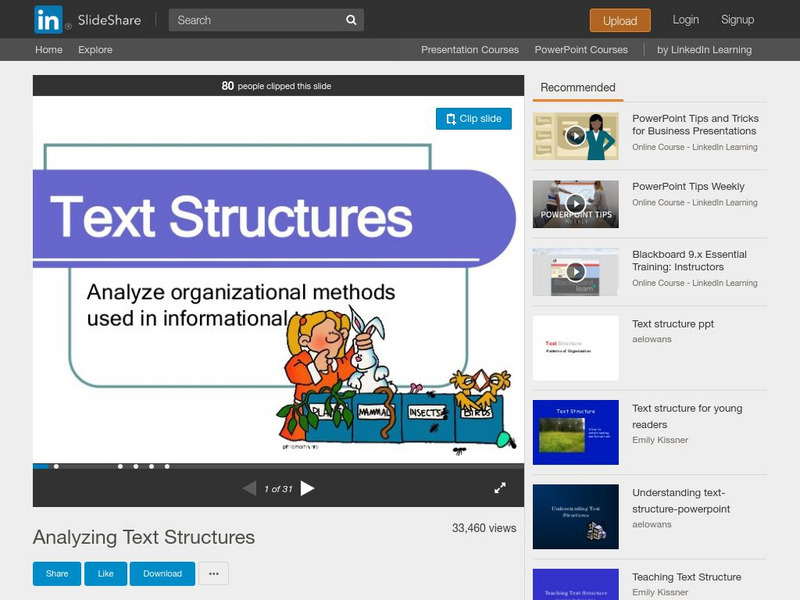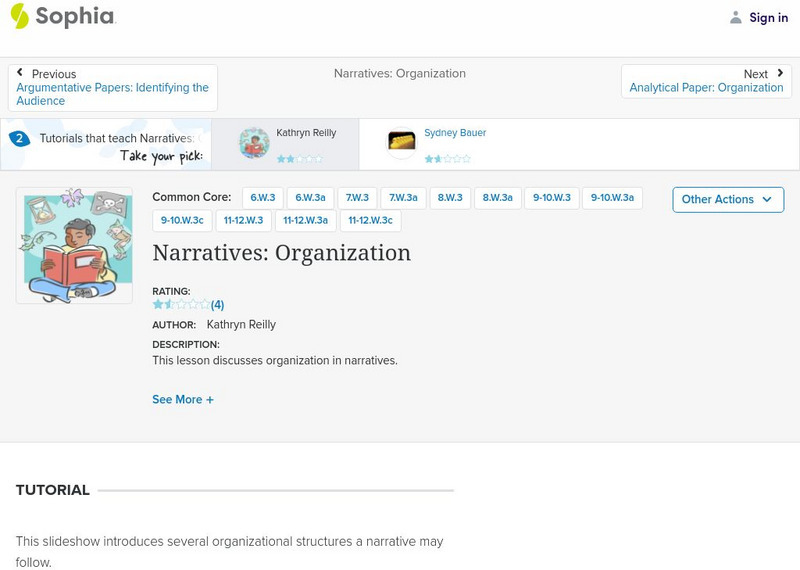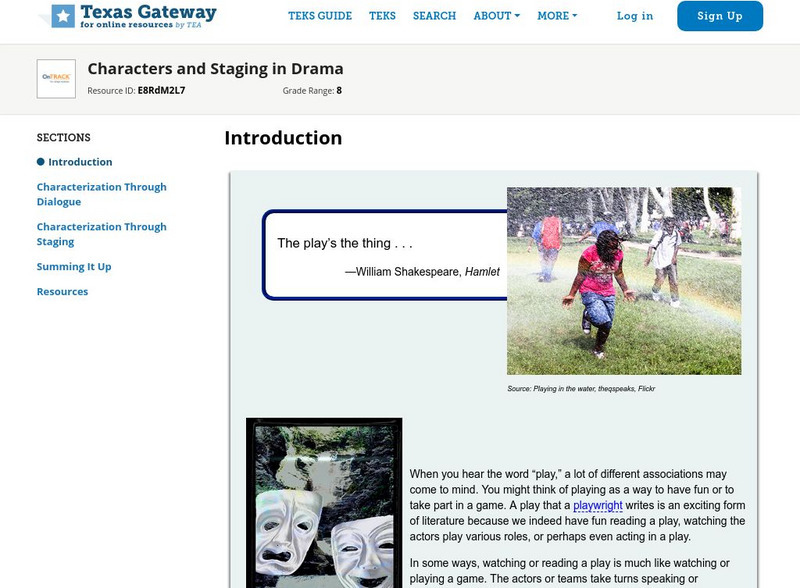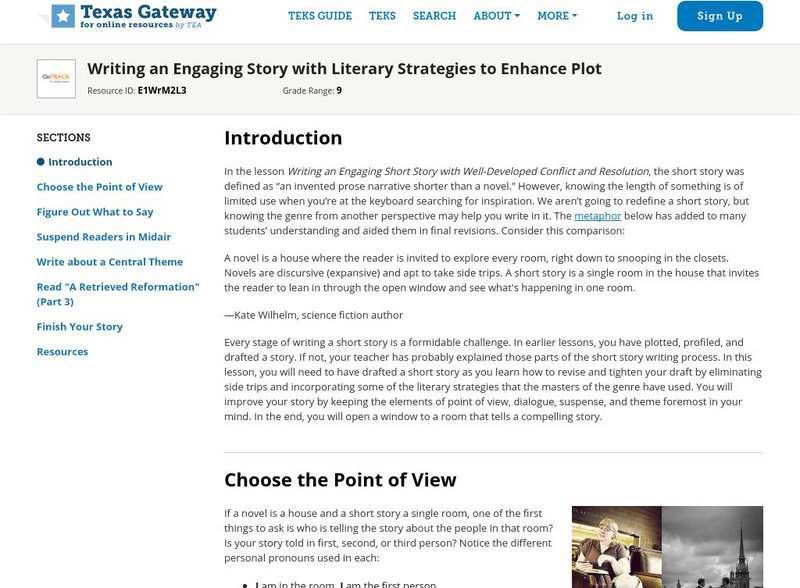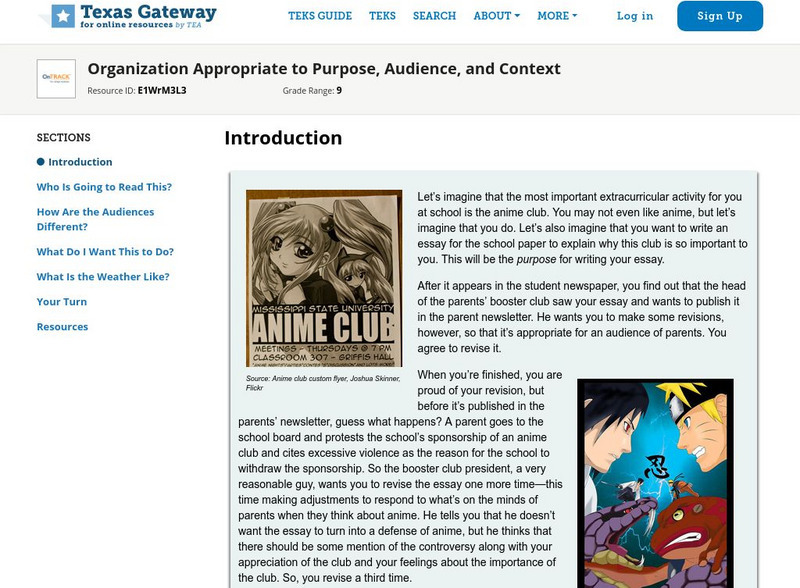Harold D. Underdown
The Purple Crayon: Writing Dazzling Dialogue
This site takes you through the process of writing dialogue in fiction, demonstrating when to omit, replace, or modify your original writing. Includes several examples and gives excellent advice for young writers. W.9-10.3b Narrative...
E Reading Worksheets
E Reading Worksheets: Patterns of Organization: Chronological Order
This learning module provides an explanation of the chronological order text structure. An explanation of the chronological text structure is provided, and a video tutorial lesson is provided to supplement this lesson [1:04] Additional...
Other
Meeting Characters in Literature: Point of View
A very clear explanation of narrator and point of view in literature. Because of the structure of the page and the use of highlighting, upper elementary students should be able to use this to help them understand the concepts, as well as...
ReadWriteThink
Read Write Think: Empowered Fiction Writers: Generating and Organizing Ideas
Do your learners' minds go blank when they confront a blank piece of paper? Speedwriting can help them get started with writing as well as come up with topics to write about. They can then incorporate their key ideas and phrases into a...
ReadWriteThink
Read Write Think: Writing Leads in the Middle School Class
Great activity in which students read various examples of "leads," or attention-grabbing introductions, in literature. Students then contemplate and develop their own interesting "lead" for a short story and share it with the class....
University of Victoria (Canada)
The U Vic Writer's Guide: Literary Term: Point of View
From the University of Victoria's writing tutorial site, this section provides a multiple-paragraph discussion of point of view.
Houghton Mifflin Harcourt
Holt, Rinehart and Winston: Elements of Literature: Narrator Chart [Pdf]
Provides an overview of the importance of a narrator in a text and some brief exercises for analysis. Helps students learn more about the role of the narrator in literature, his/her voice, and influence on other characters and events.
Houghton Mifflin Harcourt
Holt, Rinehart and Winston: Writing a Personal Narrative [Pdf]
A middle school student model of personal narrative writing. Includes a good writing style, examples, and very good notes and annotations as helpful aids for writing success. Points out the introduction, sequence of events and how they...
Writing Fix
Writing Fix: Counting Up or Down Stories
The writer will brainstorm situations where individuals or people in a group count up or count down out loud together. Using the ending of chapter 5 of Wringer by Jerry Spinelli as a model, the writer will plan a story where someone (or...
Grammarly
Grammarly Handbook: Organizing and Developing Your Ideas
A list of four important parts of a writing project with links to additional information on each.
E Reading Worksheets
E Reading Worksheets: Story Structure Activities
This learning module provides remediation and extra practice with analyzing story structures. Reinforcement for story structures is provided through the two PowerPoint lessons, three quizzes, and four different worksheets.
Tom Richey
Slide Share: Text Structures: Analyze Organizational Methods
This slideshow focuses on text structures for informational texts including how the author's purpose helps determine the organizational pattern to use and how the reader can use clues to identify the text structure used. Five...
Caro Clarke
Loving Your Characters Too Much
This article is the fifth in a series that is designed to help new authors with their new novels. This lesson focuses on your main character and what happens when that character lacks character flaws.
Caro Clarke
A, B, and C Characters
This is the ninth article in a series that focuses on helping the new novel author. This article focuses on what the author calls "A, B, and C Characters," used to describe the different levels of characters.
ReadWriteThink
Read Write Think: Sequence of Events Chart
A printable graphic organizer to help students sequence events and recognize cause and effect relationships within a story. Directions on how to use this graphic organizer as well as lists of teaching ideas and related resources are also...
Robin L. Simmons
Grammar Bytes: The Item in a Series
This site is concerned with writing any kinds of items in a series. It verbally and graphically illustrates parallel structure, and shows how to punctuate a series.
Capital Community College Foundation
Guide to Grammar and Writing: Principles of Organization
In writing and reading organization is the key to a reader's understanding. A great site for those of you who are looking for some further explanation of organization in writing. There is instruction, an example text, and specific...
University of Victoria (Canada)
The U Vic Writer's Guide: Literary Term: Narrator
Here's a definition of Narrator that includes distinctions "between the narrator, the author, and the implied author."
Sophia Learning
Sophia: Narratives: Organization
This slideshow lesson focuses on organizational structures for narratives including a review of narratives and a list of possible organizational structure types: chronological or sequential order, climactic order, in media, and...
Texas Education Agency
Texas Gateway: Characters and Staging in Drama
Learn how playwrights characterize their protagonists and antagonists through the dialogue and staging of their plays.
Texas Education Agency
Texas Gateway: Writing Engaging Stories With Literary Strategies to Enhance Plot
Use various literary strategies and devices, including dialogue and suspense, to enhance the plot in a short story.
Texas Education Agency
Texas Gateway: Organization Appropriate to Purpose, Audience, and Context
[Accessible by TX Educators. Free Registration/Login Required] Write an essay that is organized appropriate to audience, purpose, and context.
Texas Education Agency
Texas Gateway: Characters and Staging in Drama
[Accessible by TX Educators. Free Registration/Login Required] In this lesson, you will analyze how different playwrights characterize, or develop, their protagonists and antagonists through the dialogue and staging of their plays.
Other
****Story Mapping Strategy
This accessible explanation features a worksheet to help teach students to use story mapping to identify elements of a narrative.
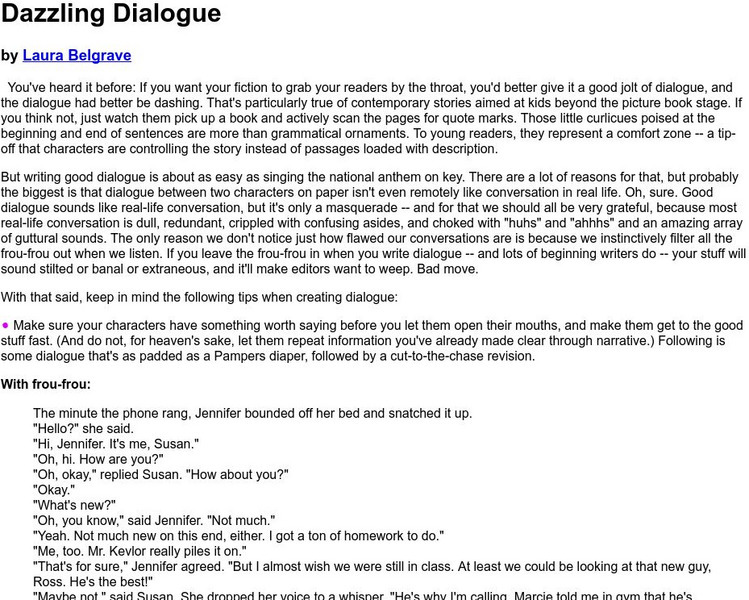


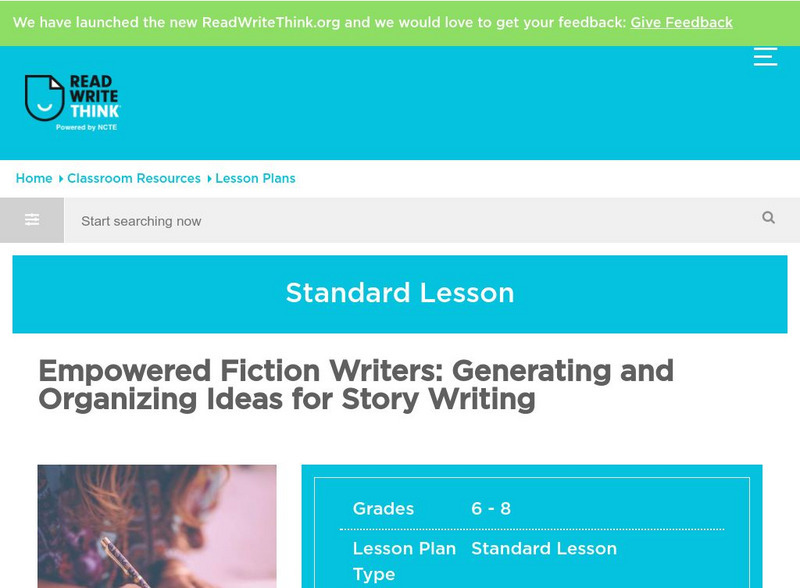


![Holt, Rinehart and Winston: Elements of Literature: Narrator Chart [Pdf] Graphic Holt, Rinehart and Winston: Elements of Literature: Narrator Chart [Pdf] Graphic](http://lessonplanet.com/content/resources/thumbnails/410058/large/bwluav9tywdpy2symdiwmduymc03nzcylxblamtwbi5qcgc.jpg?1589985144)
![Holt, Rinehart and Winston: Writing a Personal Narrative [Pdf] Unknown Type Holt, Rinehart and Winston: Writing a Personal Narrative [Pdf] Unknown Type](http://lessonplanet.com/content/resources/thumbnails/410070/large/bwluav9tywdpy2symdiwmduymc0xmtq2ny01njrxbhiuanbn.jpg?1589985236)

